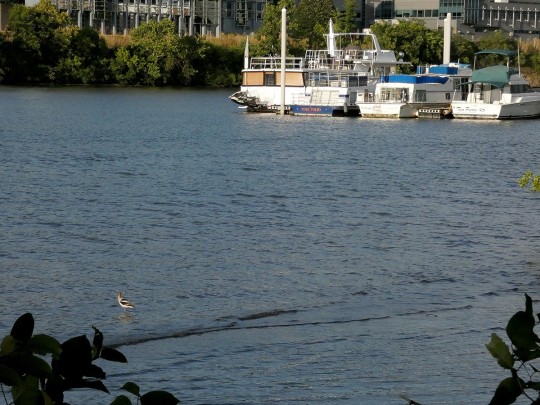by Patrick McShea
Join the Challenge April 29 – May 2, 2022
The sixth-grade student took the time to study a taxidermy mount from multiple angles before she approached with a question. “Is that Raticate?” she asked, pointing back at the lifelike preserved muskrat that had drawn her across the school cafeteria to the table promoting museum resources.
Raticate, she explained to my quizzical look, is a Pokémon creature. When she held up her phone, I conceded a striking resemblance between the cartoon-like beast filling the small screen and the sleek-furred stuffed rodent a few feet away. I then explained how the preserved muskrat represents a very real and relatively common mammal, one that in some seasons might be observable in the cattail-edged margins of Schenley Park’s Panther Hollow Lake, a location within a mile of where we stood.
The event, 14 months ago, was an evening meeting of a parent’s council at Pittsburgh Science and Technology Academy. Although I spoke with dozens of parents during my two-hour visit, the information exchange with the student remains a clear memory because it reinforced a research paper I read days earlier.
A study published in 2002 found primary school students in the United Kingdom knew far more about Pokémon creatures than they knew about local wildlife. (Why conservationists should heed Pokémon. Balmford A, Clegg L, Coulson T, Taylor, Science 29 Mar 2002) If the study’s findings remain valid nearly twenty years later, museum strategies to counter them have become more innovative, collaborative, and purposeful. The primary example of these ongoing efforts is an upcoming event known as the City Nature Challenge.
What is the City Nature Challenge?
The City Nature Challenge (CNC), coming up April 29 – May 2, 2022, is an international effort for people to document plants and wildlife in metropolitan areas across the globe. (The Pittsburgh Region’s six county territory for the CNC includes Allegheny, Armstrong, Beaver, Butler, Westmoreland, and Washington Counties.) The event is a bioblitz-style competition with cities competing on several measurable fronts, including the number of participants, the sum total of recorded observations, and the total number of identified species. The technology enabling broad participation and accurate data compilation in this vast observational effort is the free app, iNaturalist, utilized through the same common device by which I first glimpsed Raticate, a smartphone.
iNaturalist and City Nature Challenge History
iNaturalist, originally developed as the Master’s Final Project of Nathan Agrin, Jessica Kline, and Ken-ichi Ueda at University of California at Berkeley’s School of information, is now a joint initiative of the California Academy of Sciences and the National Geographic Society. As the initiative’s website explains, “iNaturalist is an online social network of people sharing biodiversity information to help each other learn about nature.”
The City Nature Challenge also has California roots, beginning in 2016 as a Los Angeles versus San Francisco contest by citizen science staff at the Natural History Museum of Los Angeles County and California Academy of Sciences. These two institutions continue to as the principal organizers for the global effort, and this year, more than 400 cities across the globe are expected to participate in the competition.
2021 marked the fourth consecutive year for Carnegie Museum of Natural History to serve as one of CNC’s city organizer agencies. Partner organizers for 2021 were the Pittsburgh Parks Conservancy and the Pennsylvania Alliance of Environmental Educators. An online workshop for teachers and other educators to promote student participation in early March helped groups get an early start and a regularly updated web page contains current information about the event.
How to Participate in City Nature Challenge
If spending some time later this spring documenting the plants, animals, and fungi sounds interesting, please visit our City Nature Challenge page to learn how you can participate with the museum in the Pittsburgh region. We offer resources for educators, groups, and individuals interested in the annual bioblitz.
After the April 29 – May 2 documentation phase, comes a vital second phase to the CNC that you might be able to support: identification of the photographed species. The identifications will be crowd-sourced through the online community May 3 – May 8 still using the iNaturalist app. For information about participating in this effort, please contact Taiji Nelson (nelsont@carnegiemnh.org).
Patrick McShea works in the Education and Visitor Experience department of Carnegie Museum of Natural History. Museum employees are encouraged to blog about their unique experiences and knowledge gained from working at the museum.
Related Content
Collected on This Day in 1998: Common Chickweed
Carnegie Museum of Natural History Blog Citation Information
Blog author: McShea, PatrickPublication date: April 7, 2021











